W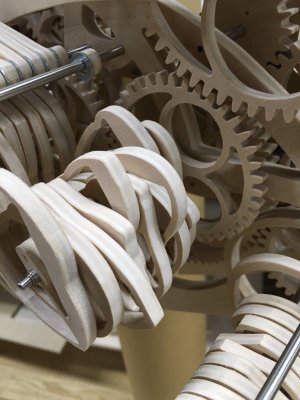 e’ve featured a lot of clock builds, but this one, as the title suggests, is frickin’ amazing. Talented art student [Kango Suzuki] built this Wooden Mechanical Clock (Google translation from Japanese) as a project while on his way to major in product design. There’s a better translation at this link. And be sure to check out the video of it in motion below the break.
e’ve featured a lot of clock builds, but this one, as the title suggests, is frickin’ amazing. Talented art student [Kango Suzuki] built this Wooden Mechanical Clock (Google translation from Japanese) as a project while on his way to major in product design. There’s a better translation at this link. And be sure to check out the video of it in motion below the break.
[Kango]’s design brief was to do something that is “easy for humans to do, but difficult for machines”. Writing longhand fits the bill, although building the machine wasn’t easy for a human either — he needed six months just to plan the project.
The clock writes time in hours and minutes on a magnetic board. After each minute, the escapement mechanism sets in motion almost 400 wooden cogs, gears and cams. The board is tilted first to erase the old numbers, and then the new numbers are written using four stylii.
The clock doesn’t have any micro controllers, Arduinos, servos or any other electronics. The whole mechanism is powered via gravity using a set of four weights. [Kango] says his biggest challenge was getting the mechanism to write the numbers simultaneously. While he managed the geometry right, the cumulative distortion and flex in the hundreds of wooden parts caused the numbers to be distorted until he tuned around the error.

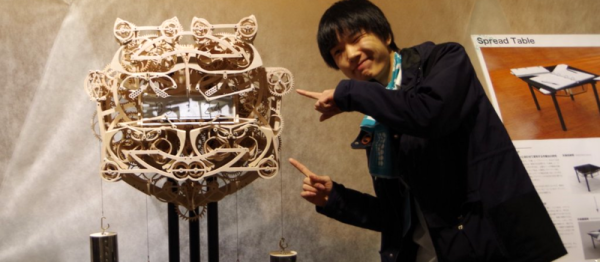
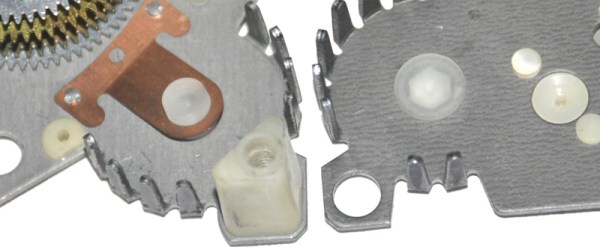
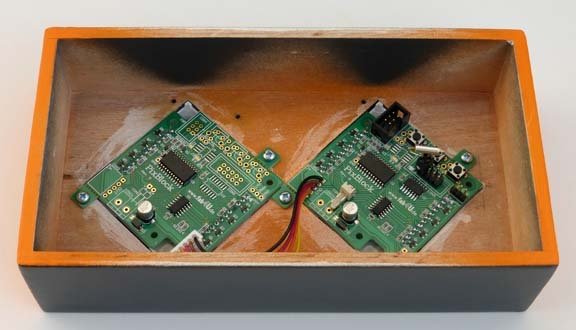

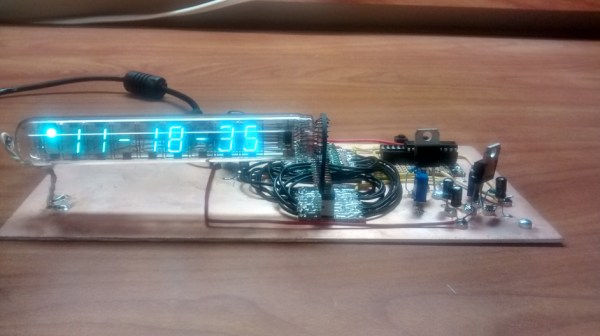
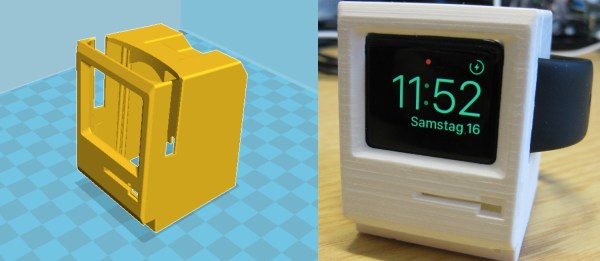

 He built the enclosure completely out of walnut, which gives it a very refined and polished look; we’re quite impressed with his woodworking skills. The cool thing about this digital clock is that he used individual LEDs to create both the digital 7-segment displays, and a ring of LEDs around it to denote the hour.
He built the enclosure completely out of walnut, which gives it a very refined and polished look; we’re quite impressed with his woodworking skills. The cool thing about this digital clock is that he used individual LEDs to create both the digital 7-segment displays, and a ring of LEDs around it to denote the hour.
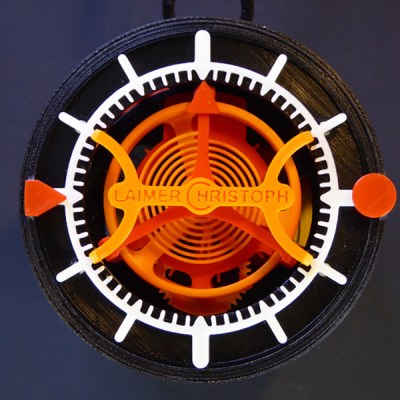 [Christoph Lamier] designed this tourbillon clock in Autodesk Fusion 360, with 50 printable parts, and a handful of pins, screws, and washers. The most delicate parts – the hairspring, anchor, escapement wheel, and a few gears were printed at 0.06 layer height. Everything else was printed at a much more normal resolution with 0.1mm layer height.
[Christoph Lamier] designed this tourbillon clock in Autodesk Fusion 360, with 50 printable parts, and a handful of pins, screws, and washers. The most delicate parts – the hairspring, anchor, escapement wheel, and a few gears were printed at 0.06 layer height. Everything else was printed at a much more normal resolution with 0.1mm layer height.








